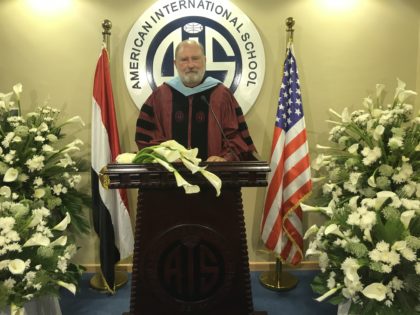To me, culture is a very important element for a successful school. At AISW we try to fuse the culture of an American school with the culture and traditions of Egypt. I believe that we have been successful in doing this as our enrollment keeps increasing and our admissions office is getting busier each year.
Every School Has a Culture
When you have people together for any amount of time, a culture emerges that consists of a set of customs, beliefs, norms and values. This culture can either create a sense of mutual purpose, a mission, a vision, values and goals or perpetuate discord. Every school has a culture whether you work on the culture or not (Barth, 2003). Culture cannot be seen but it is there. It is an important aspect of any school and ours in particular.

Culture consists of the beliefs, feelings, behavior, and symbols characteristic of an organization. More specifically, culture is defined as shared philosophies, ideologies, beliefs, feelings, expectations, assumptions, attitudes, norms and values (Alvesson, 2007).
While there is considerable variation in the definitions of a school culture, it appears that most contain the following characteristics:
- Feelings – An overall atmosphere is conveyed in an organization by the physical layout and the way in which members interact with clients or other outsiders.
- Rules – Guidelines exist for getting along in the organization, or what is needed to be learned by the newcomer in order to “fit in”.
- Philosophy – Policies guide an organization’s beliefs about how employees and clients should be treated. Most districts and schools have statements of philosophy or mission statements to express their views.
- Dominant – An organization espouses and expects its members to share major values. Typical examples in schools are high-performing levels of faculty and students, low absence and dropout rates with high efficiency and effectiveness.
- Norms – Standards of behavior evolve in work groups. The impact of work group behavior results in standards and yardsticks that are sanctioned by group norms.
- Observed Behavioral Regularities – When organizational members interact, they use common language, terminology, rituals and ceremonies related to deference and demeanor. (Bulach, Lunenburg, Potter, 2008)
None of these characteristics by itself represent the essence of culture, but collectively they reflect and give meaning to the concept of culture.
The culture of a school (this includes AISW) is interrelated with most other concepts in managing schools, including organizational structures, motivation, leadership, decision making, communication and change. The challenge for a principal/director is to create a culture that is moving the school forward toward its vision and reinforcing the behaviors necessary for school improvement. The principal/director, as developer of the culture, is a support and visionary. He/she provides the leadership that is necessary to take the school to the next level.

Blake and Mouton, in several of their books and articles, discuss Task and People and how to have a good balance of work (eye on the school goals and vision) and employees (caring) to move the school onward and upward. To develop this culture for the vision that has been created, this existing culture must be identified. The expectations diagnosed should be utilized to identify what the faculty values and expectations in terms of attitudes, behavior, and commitments. It is difficult to develop a plan to achieve a new culture if you have not identified the old one.
In a high performing school, the principal/director works with all stakeholders to develop the culture. Developing a school’s culture is a conscious endeavor, and a principal must be proactive as she/he goes about doing so. The principal/director begins by having people articulate in very specific terms the kinds of behaviors and commitments they think are necessary to move the school forward. This is a challenge, for every school faces the issue of developing a positive school culture.
In developing a positive culture, the principal/director should ask, what expectations, attitudes, behaviors, and commitments must we demonstrate for our vision to be realized? Are we clear on what is to be accomplished and the criteria we will use in assessing our efforts? Are the current policies, programs, procedures and practices of our school congruent with our stated vision and values? What are our plans to replace discrepancies? I hope this will be helpful as you start to move your school forward using school culture.
















 All Services
All Services